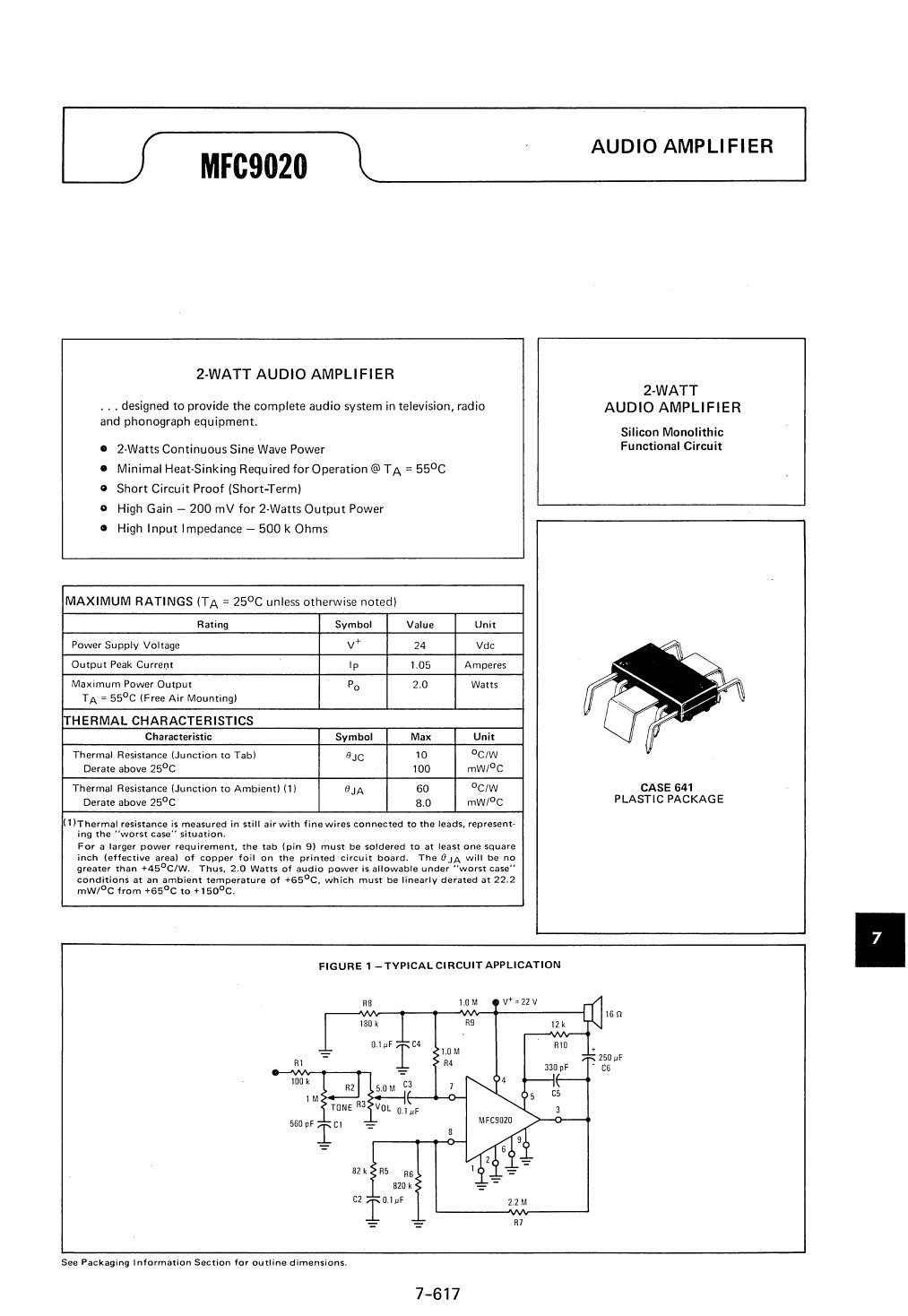
I found 4 of these MFC9020, never used, in my junkspares box. The datasheet appears in Motorola's 1972 edition of linear ICs so that makes them around 50 years old.
Since JLCPCB brought shipping down to $1.50 for 5 boards, boards cost $0.70 delivered. So I decided to put these ICs and a bunch of THT parts to work as 4 amplifiers and get practice in KiCad.
Details about this IC: This was designed before high current transistors were common in linear ICs, so they used higher voltages of up to 24V to get the needed output power. That also accounts for the 16 ohm speaker. This IC would have been used in car or table radios where the voltages are 12V upwards. Any accompanying digital display would have been VFD which also needs that order of voltage. However they could readily incorporate darlington pairs so the input and feedback pin impedances are high. There are a couple of tabs meant to be soldered onto the PCB copper to help dissipate heat.
The one of a kind package gave me practice creating a footprint in KiCad. The pin spacings I obtained from the datasheet. I needed a slot for the cooling tab. Slots have to be 2 mm or larger and have rounded ends due to the cutting tool. I also had to remove the soldermask around the slot to provide a pad to solder the tab to.
My schematic is just a copy of the reference schematic without the volume and tone control pots at the input and with added bypass capacitor C1, and load resistor R11 to ensure that the driver transistor has current even without a speaker connected.

I picked yellow soldermask for novelty. Generally I prefer blue or green. After the board was sent off for fabrication I realised that I should have put silkscreen legends on the input, speaker, and power ports. But no matter, this is a once-only design for myself only.
Here's a picture of an assembled board. The yellow has an orange tint but attractively different from the usual green.
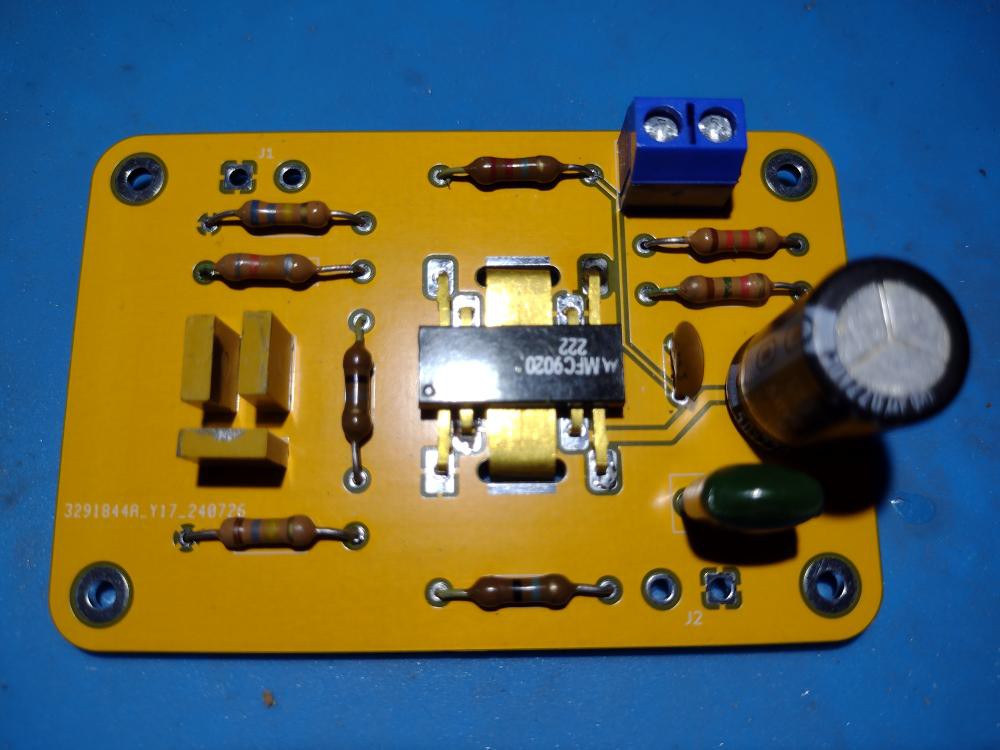
For comparison here's a modern dual-channel class D amplifier, much smaller and hardly any heat generation due to class D. Some chips even have a bluetooth receiver on-chip, something that didn't exist 50 years ago.
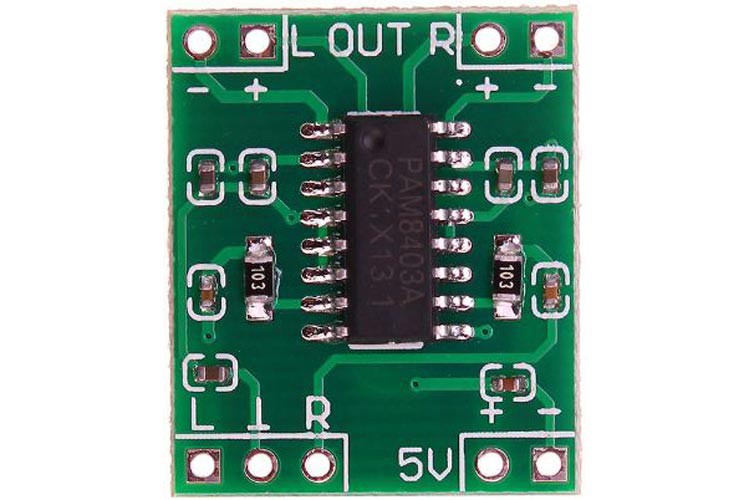
 Ken Yap
Ken Yap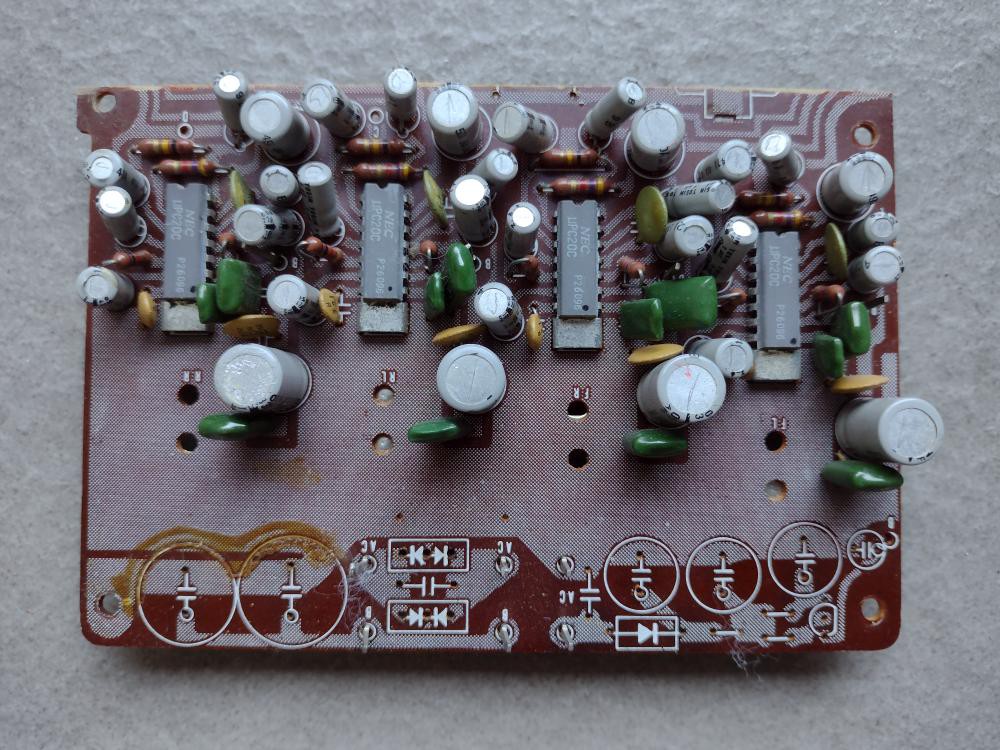
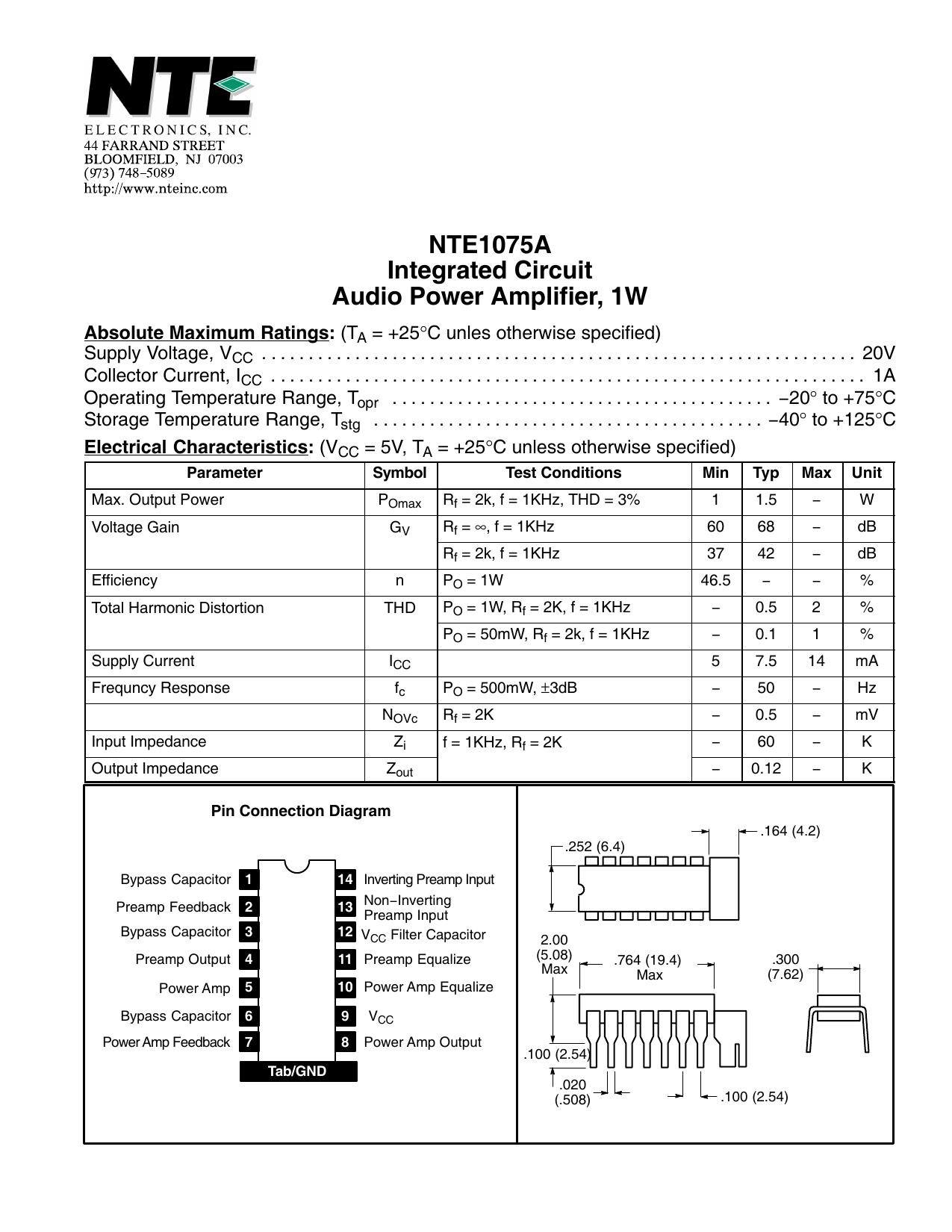




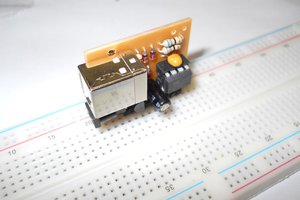
 danjovic
danjovic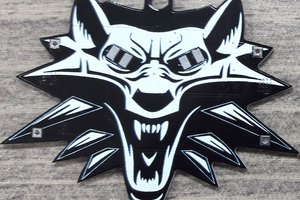
 Torbjörn Lindholm
Torbjörn Lindholm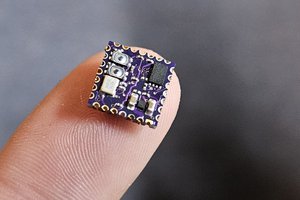
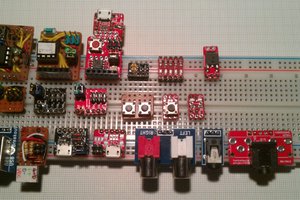
 Stefan Lochbrunner
Stefan Lochbrunner
Awesome IC package. But inquiring minds want to know...how does it sound? :-)